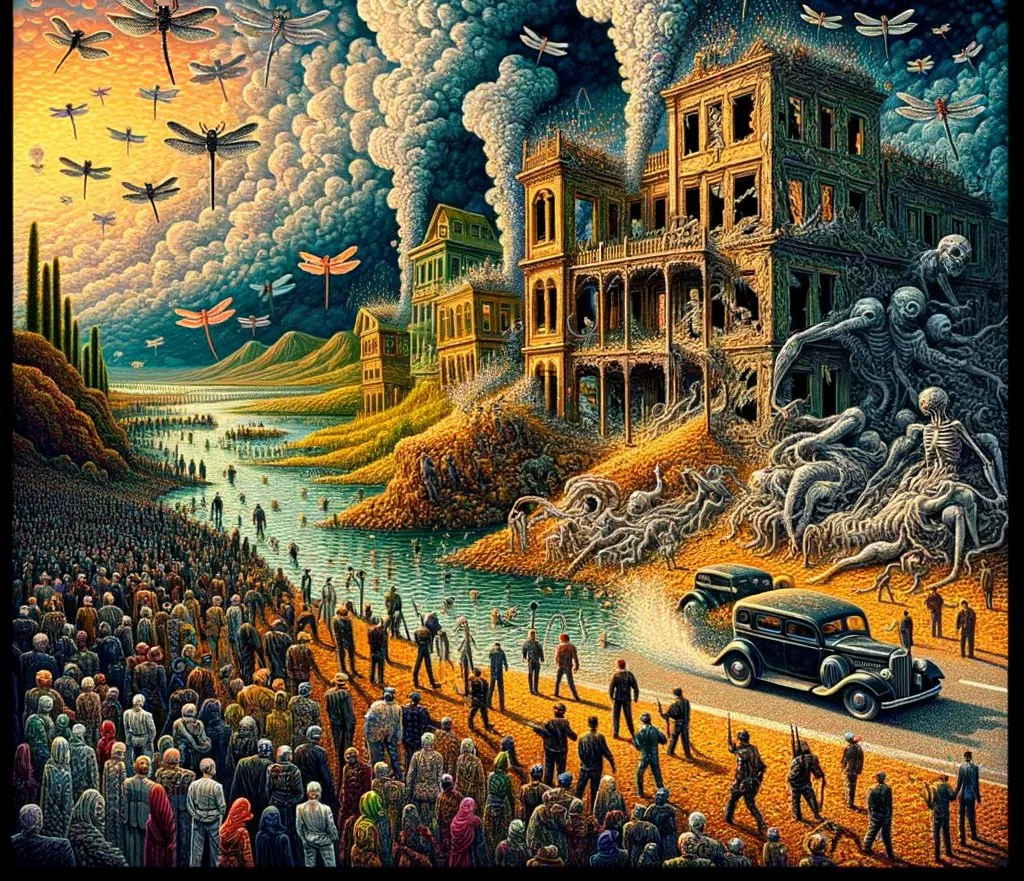There is no time,
by now
Among the old crumbling houses.
Where immensely silent eyes
watch dying
The eternal contours of disaster.
Where the shards of a postcard war
crumble in terror,
at the funereal pace of marching
Of a sinister battalion of dragonflies.
…
There is no time,
by now
On the winding path of the cross.
Where a crowd of passersby,
Attracted by the dry plume of a guide,
drag themselves despondent,
Asking around like schoolchildren,
If there is ever anywhere to sit
At the end of that dismal parade.
(Useless bogeyman:
There is always to sit among the bystanders during an ordeal.)
…
There is no time,
by now
Along tonight’s highway.
Where the ghosts of motorcyclists,
(Between a photo printed above the marble
and a bunch of crumpled cornflowers),
lie fastened to light poles,
immolated without remorse
Like flies in agony on a windshield.
…
There is no time,
By now,
Among the ragged coral clouds.
Where an image (impatient) is today transbordered
Toward the insulting immensity of the universe.
…
All fear is in vain,
Now,
Among the cooled lapilli,
Or, while a fish is wriggling,
(proud of its expiring),
Suffocating on the shoreline.
…
All fear is in vain,
Now,
And weeping solaces the Dionysian spirit
Almost like an intercourse of early youth.
…
All fear is in vain,
now…
…in the bowels of the sand,
an illusion can (perhaps) end
To the eternal narcosis of God.
Deposited for legal protection with Patamu: certificate
A brief note on the “remoteness” of God
Throughout history, various thinkers and theologians have reflected on God’s distance from humanity and the role of divine intervention in human tragedies. Several perspectives on this topic can be found in the Bible. Some scholars emphasize God’s transcendence, highlighting His supreme power and sovereignty over all creation. They argue that God’s distance from human suffering is a necessary aspect of His nature, as human limitations prevent us from fully understanding His ways.

Others, however, focus on God’s immanence, emphasizing his presence and closeness to humanity. They believe that God is intimately involved in the lives of individuals, offering comfort and guidance during times of trial and suffering. Books such as Job and Psalms in the Bible explore the complexities of God’s relationship with His creation, showing the tensions between His transcendence and His immanence. Ultimately, the question of God’s distance from man and his tragedies remains a profound mystery that intrigues thinkers from different cultures and beliefs.
If you like this poem, you can always donate to support my activity! One coffee is enough!


